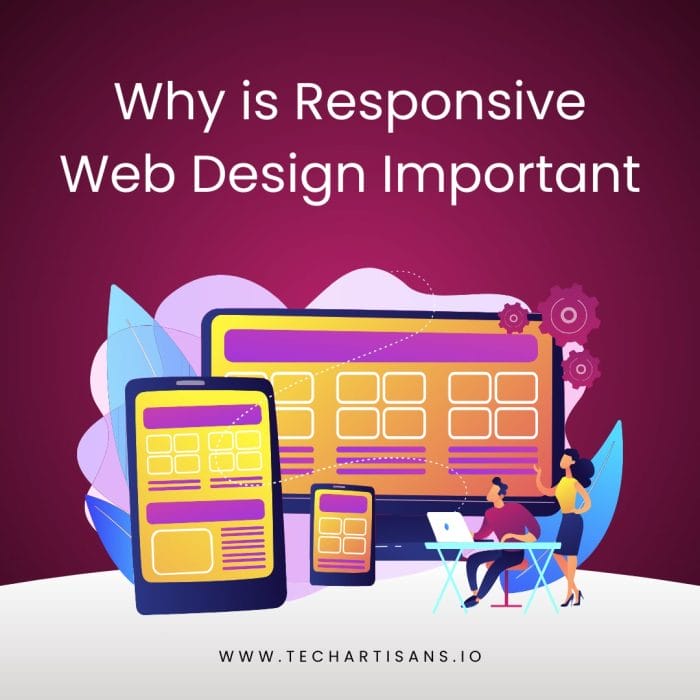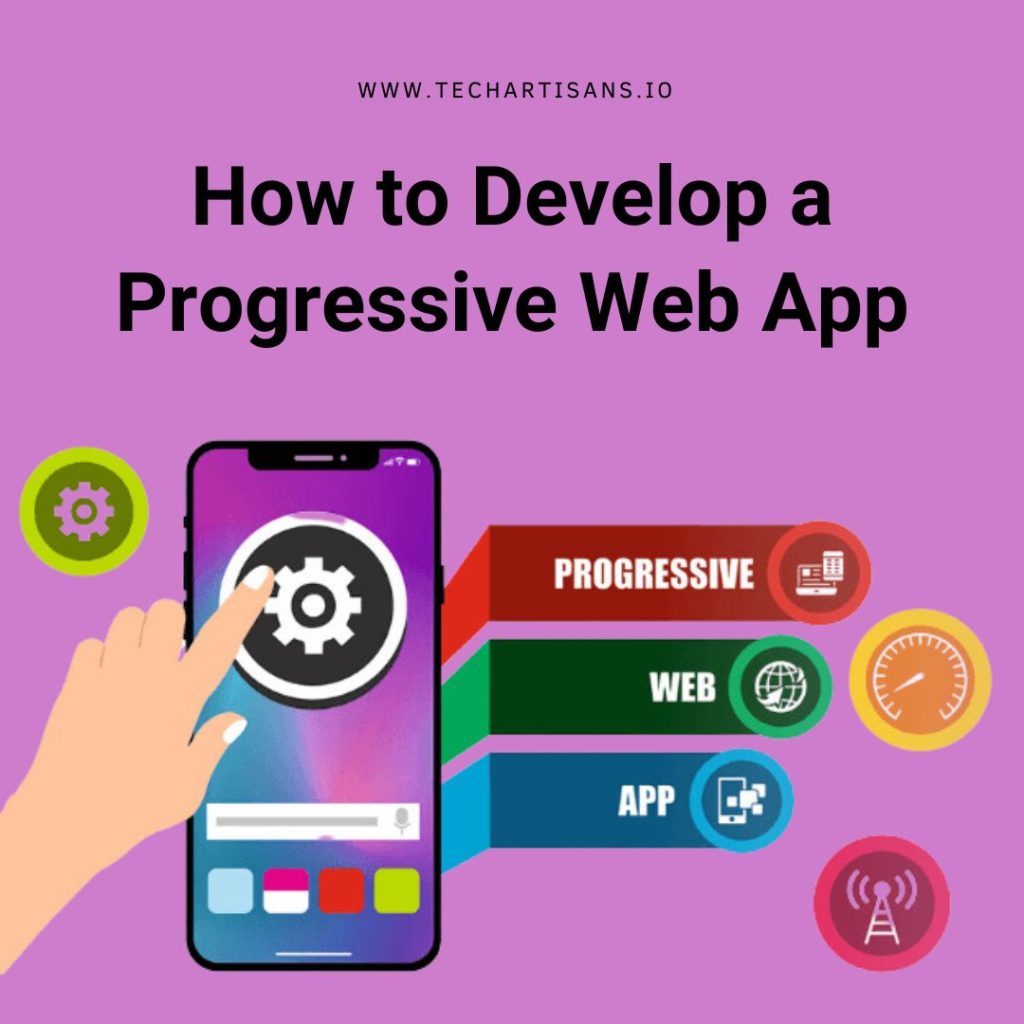Responsive Web Design (RWD), a critical tool in today’s fast-paced digital landscape, ensures your website is visually appealing and functional, regardless of the device used. With the shift toward mobile internet usage, businesses must adopt a Mobile-First Design approach. Why is Responsive Web Design important? It’s simple: in our increasingly mobile world, a responsive web design ensures a seamless user experience in your search engine rankings and, ultimately, amplifies your online business. No matter the device screen size, a responsive design guarantees your business is portrayed in the best possible light.
The Rise of Mobile Internet Usage
The explosion of smartphone usage in the last decade has led to a significant shift in how we access the internet. More than ever, people are turning to their mobile devices for everything from shopping and socializing to learning and working, underscoring the importance of Mobile-First Design in today’s digital landscape.
Present Statistics On Mobile Internet Usage And Trends.
According to Statista, over half of the global web traffic came from mobile devices in 2020, signifying a fundamental shift in internet usage patterns. This trend shows no signs of slowing down as smartphone penetration rises, particularly in emerging markets. Cisco’s Annual Internet Report projects that by 2023, there will be 5.3 billion global mobile users, up from 4.8 billion in 2018. In this era of widespread mobile internet usage, responsive web design is no longer a luxury but a necessity for businesses, ensuring they remain competitive and relevant in the digital marketplace.
The Importance of Catering to Mobile Users.
Catering to mobile users is imperative for businesses in today’s digital age. Users demand a seamless experience that allows them to browse, shop, and connect easily on their mobile devices. A website must deliver this to avoid losing potential clients to competitors. A well-implemented responsive web design caters to this very need. It offers an optimal viewing and interaction experience, translating into happier customers, increased engagement, and higher conversion rates. Moreover, Google’s Mobile-First indexing further underscores the importance of having a mobile-friendly website. Hence, paying attention to the needs of mobile users can cost businesses dearly, both in terms of customer satisfaction and search engine rankings.
Understanding User Experience (UX) and Its Importance
User Experience (UX), a key element in the digital arena, refers to a user’s overall experience while interacting with a website or application. Its importance cannot be overstated, especially in responsive web design, as it directly impacts a user’s perception of your business and their likelihood to engage with your website.
Define UX and Its Relevance to Mobile and Tablet Users.
User Experience (UX) is about how your website or application feels to its users, including ease of use, efficiency, and overall satisfaction. It’s the difference between a visitor staying, engaging, converting, or leaving frustrated. In the context of mobile and tablet users, good UX means a site that loads quickly, is easy to navigate with touch controls and displays content properly regardless of screen size. When your website has a responsive design, it automatically adjusts to provide an optimal UX across all devices. This relevance of UX to responsive web design is pivotal to keeping mobile and tablet users engaged and, inevitably, loyal to your business.
How Responsive Design Improves UX.
Responsive web design improves UX by ensuring a consistent and intuitive interface across all devices. It eliminates the need for pinching and horizontal scrolling, which can harm user engagement. Instead, content automatically adjusts to fit the screen size, making navigation a breeze. This leads to increased user satisfaction and encourages longer visits, which are crucial for business success.
Furthermore, a responsive design demonstrates your commitment to user convenience, which instills trust and positive brand perception among customers. In the competitive digital marketplace, having a responsive design is a powerful tool for standing out and retaining user attention.
Technical Aspects of Responsive Design
Delving into the technical realm, understanding the nuts and bolts of Responsive Web Design can empower you to make informed decisions about your business’s online presence. Let’s unravel the core components that make a website truly responsive.
Discuss The Technical Elements Like Screen Size Adaptability, Image Compression, and Touch Targets.
Let’s dive into some crucial technical elements of responsive web design – screen size adaptability, image compression, and touch targets – and explore how they create a seamless user experience across multiple devices.
Screen Size Adaptability
One of the prime aspects of responsive web design is screen size adaptability. This feature allows the layout of a website to adjust dynamically according to the screen size and orientation of the device it’s viewed on. This ensures the site is accessible and user-friendly across various devices, from desktops and laptops to tablets and smartphones.
Image Compression
Image compression is another vital component of responsive design. Large, high-resolution images can slow page load times, especially on mobile devices with limited bandwidth. Image compression techniques ensure images load quickly without compromising their visual quality, enhancing the overall user experience.
Touch Targets
Lastly, consider touch targets—these areas on a mobile screen that respond to user touch. In responsive design, these targets are optimized to be large enough for a finger to accurately press, improving navigation and interaction on touch-screen devices. This subtle yet crucial responsive design element can significantly elevate the mobile user experience.
Explain the Concept of Mobile-First Design.
As we delve deeper into the digital era, understanding the concept of Mobile-First Design is crucial for businesses aiming to establish a robust online presence.
Mobile-First Design
The mobile-first approach is a progressive strategy in web design that prioritizes optimizing the website for mobile devices first before scaling it up for larger screens like desktops. This shift in design philosophy is a direct response to the surge in mobile internet usage.
With mobile-first design, the focus is on delivering the core content and functionality effectively on smaller screens. Despite the limited screen real estate, it aims to ensure that mobile users have an experience that’s as enriching and satisfying as on a desktop. Ultimately, this approach aligns perfectly with the tenets of responsive web design – flexibility, user-friendliness, and device agnosticism.
The Impact of Page Load Speed
Page load speed is a critical factor influencing user experience, engagement, and satisfaction. It is particularly crucial in responsive web design, as a slow-loading website can deter users, tarnishing the overall user experience and ultimately impacting your business’s success and growth.
Present Data On User Expectations For Page Load Times.
Recent studies illuminate some telling facts about user expectations regarding page load times. As per a report by Google, 53% of mobile users abandon a site if it takes longer than 3 seconds to load. This statistic underscores the importance of swift load times in minimizing bounce rates and retaining user attention.
Moreover, a BBC News report suggests that for every additional second a page takes to load, 10% of users will leave. This is a stark reminder that even marginal improvements in load speeds can significantly impact user retention and overall site engagement.
Explain How Responsive Design Can Improve Website Speed.
Responsive web design can drastically improve website speed by optimizing images and content layout for different devices. For instance, smaller prints can be served to mobile devices, reducing data usage and speeding up load times.
Also, by utilizing responsive design principles, unessential elements on a website can be hidden on smaller screens. This reduces the amount of content that needs to load, resulting in faster page speeds.
Ultimately, a responsive design ensures that your website is visually optimized for every device and performance-optimized, delivering a swift and seamless browsing experience to all users.
Conversion Rates and Bounce Rates
A responsive web design enhances user experience and plays a pivotal role in influencing conversion and bounce rates, two crucial metrics that directly impact a business’s bottom line. Explore how a mobile-first, responsive design can positively affect these key performance indicators.
Define Conversion Rates and Bounce Rates.
Responsive web design is a key player in the intricate game of conversion and bounce rates, significantly shaping a website’s performance and success.
Conversion Rates
A conversion rate is a key performance indicator (KPI) that measures the effectiveness of your website in prompting visitors to take a desired action, such as making a purchase, signing up for a newsletter, or filling out a contact form. It is calculated as the percentage of total visitors who ‘convert’ by performing the desired action.
Bounce Rates
Bounce rate, on the other hand, is the percentage of visitors who navigate away from your site after viewing only one page. A high bounce rate may indicate that users are not finding what they’re looking for or that the website’s layout and navigation are not user-friendly—issues that responsive web design can address effectively.
Discuss How Responsive Design Can Lead To Better Performance In These Areas.
Responsive design greatly improves user engagement, thus potentially enhancing conversion rates. By optimizing the website’s layout for different devices, it ensures easy navigation and a better browsing experience. This can effectively drive users to complete the desired action, whether purchasing a product or signing up for a service.
Regarding bounce rates, a responsive design can reduce the likelihood of users leaving after viewing just one page. With faster load times and an adaptable interface, users are more likely to explore the site further. Consequently, the bounce rates can decrease, indicating more effective engagement with your website content.
SEO Benefits of Responsive Web Design
Responsive web design enhances user experience and engagement and offers significant SEO benefits, playing an instrumental role in improved search engine rankings. Let’s explore the SEO advantages of a responsive website to your business.
Explain How Responsive Design Aligns With Google’s Mobile-First Indexing.
In the ever-evolving digital landscape, Google’s mobile-first indexing has become pivotal, making responsive web design more relevant.
Google’s Mobile-First Indexing and Responsive Design
Google’s mobile-first indexing means that Google predominantly uses the mobile version of the content for indexing and ranking. This is where responsive web design can be a game-changer.
Responsive design ensures that the mobile version of your site is as content-rich and accessible as the desktop version, aligning perfectly with Google’s mobile-first mandate. It guarantees mobile users receive quality content, contributing significantly to the site’s SEO performance.
By adopting responsive web design, businesses can stay in tune with Google’s mobile-first indexing, potentially experiencing better search visibility and higher rankings.
List the SEO Advantages of Having a Responsive Website.
This section will delve into the detailed SEO benefits of adopting a responsive web design strategy for your business.
SEO Advantages of Having a Responsive Website
- Better Site Usability: Google considers a website’s usability in its ranking algorithm. Responsive design improves site usability by providing a seamless experience across different devices, which can lead to increased time-on-site and higher rankings.
- Decreased Bounce Rate: Responsive web design can lower bounce rates as it optimizes the user experience irrespective of the device used. A lower bounce rate signals to Google that the site provides relevant content, improving the site’s ranking.
- No Duplicate Content Penalty: With responsive design, businesses avoid running separate sites for different devices, eliminating the risk of Google penalizing duplicate content.
- Increased Social Sharing: Responsive design enhances social sharing, indirectly benefiting SEO. While social shares may not directly affect rankings, increased visibility and Shorter can positively influence SEO performance.
- Faster Page Speeds: As mentioned earlier, responsive design can significantly improve page load speeds, a critical metric Google considers in its ranking algorithm. Shorter load times improve user experience and boost SEO rankings.
The Financial Implications of Responsive Design
Investing in responsive web design can have significant financial implications for your business, with the potential for a high return on investment through increased user engagement, improved SEO performance, and enhanced customer conversion rates. Let’s delve into the economic benefits and cost aspects of adopting a mobile-first, responsive design strategy for your website.
Discuss Potential Revenue Impacts Of Not Having A Responsive Website.
The absence of a responsive design can lead to a poor user experience, especially on mobile devices. Users may need help navigating your site, leading to an increase in bounce rates. This can directly impact your potential revenue, as frustrated users are less likely to convert into paying customers.
Furthermore, due to Google’s mobile-first indexing policy, non-responsive websites often rank lower in search engine results. Poor visibility in search engine results can lead to reduced traffic to your site, which, in turn, can significantly impact your revenue. Therefore, investing in responsive web design is a good practice and a critical business strategy.
Highlight the Cost-Effectiveness Of Responsive Design Over Having Separate Desktop and Mobile Sites.
Maintaining separate websites for desktop and mobile users can take time and effort. Each version requires distinct design, development, and maintenance efforts, doubling the workload. In contrast, responsive design uses a single, flexible layout that adapts to different screens. This reduces upfront development costs and simplifies maintenance, saving time and resources in the long run. Additionally, it eliminates the risk of search engine penalties for having duplicate content across multiple websites, safeguarding your SEO efforts. Thus, responsive web design is a cost-effective solution that optimizes your financial investment and yields valuable returns.
Adapting to Different Screen Sizes
In the era of digital diversity, ensuring your website can adapt to different screen sizes is crucial. This section will delve into how responsive web design is integral to this adaptation, enhancing user experience across a spectrum of devices.
Explain How Responsive Design Works Across Various Devices.
Responsive web design employs flexible layouts and grids that resize and adapt to the screen size of the device. Regardless of whether a user is accessing your website from a desktop computer, a tablet, or a mobile phone, the layout will automatically adjust to provide the best viewing experience.
This adaptability ensures that all website elements, including menus, buttons, images, and text, are equally accessible and aesthetically pleasing across all devices. Consequently, this leads to improved user experience, increased engagement, and better conversions, underscoring why responsive web design is fundamental for businesses today.
Discuss the Importance Of Adaptive Design For Functionality.
Adaptive design is vital for functionality as it tailors your website to the user’s device, ensuring an optimal browsing experience. It dynamically changes the website’s layout, images, and navigational features based on the device’s capabilities and screen size.
This approach, in turn, enhances user engagement and satisfaction, eliminating unnecessary scrolling, zooming, or resizing. Users appreciate the seamless browsing experience and are likelier to stay on your website, explore more pages, and engage more with your content. Thus, adaptive design is essential to maintaining functionality and user-friendliness across all platforms.
The Future is Mobile: Preparing for the Shift
The paradigm shifts towards a mobile-first approach as we steer into the digital future. This section delves into why businesses must prepare for this shift and the importance of incorporating responsive web design into their strategy to stay ahead in the fiercely competitive digital landscape.
Highlight the Ongoing Trend Towards Mobile Usage.
With the rise of smartphones and tablets, more people are accessing the internet through mobile devices than ever before. This trend shows no signs of slowing down, making mobile usage a dominant force in online activity. Businesses must pay attention to this shift as it directly influences how consumers interact with online content.
Responsive web design is no longer a luxury but a necessity in this mobile-centric world. It ensures your website is fully accessible and functional across all devices, particularly on mobile screens. If your site is mobile-friendly, you can avoid losing a significant chunk of your audience and potential revenue to your competitors.
Encourage Businesses To Adopt A Mobile-Responsive Philosophy.
In this digital age, adopting a mobile-responsive philosophy is crucial for businesses. Creating a mobile-friendly website ensures optimal user experience on all devices, boosting engagement and customer conversions. Embracing responsive web design now will future-proof your business, keeping you competitive as technology evolves. Keep your business from lagging behind; invest in responsive web design today.
Conclusion: Making the Right Moves for Your Business
In conclusion, responsive web design is critical for business success in the modern digital landscape. It enhances user experience across various devices, boosts your site’s visibility in search engine results, and offers a cost-effective solution compared to maintaining separate areas. As the world shifts towards a mobile-first approach, having a mobile-responsive site is no longer optional but critical to staying competitive. Therefore, businesses must assess their website’s responsiveness and adopt a mobile-first philosophy. Keep your business from falling behind in the digital race. Invest in responsive web design today and create a robust online presence for the future.







